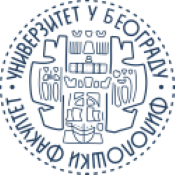Romance Languages Do Not Come From Latin, a Hypothesis to Take into Account?
DOI:
https://doi.org/10.18485/beoiber.2023.7.1.2Apstrakt
The aim of this work is to see if the theory that the Romance languages do not stem from Latin can be viewed as a valid scientific hypothesis, or if it falls under the area of pseudoscience. To do that, we will analyse two recent books that present the said theory, comparing them to the three clearest examples of pseudo-linguistic works and with the other one which, being scientific in nature, has been the subject of heated discussions. The conclusion that we aim for is that the hypothesis that the Romance languages do have their origins in Latin, in order to be considered scientific, has to be seen as provisional and can be subjected to falsification, something that both analysed works are trying to do.Reference
Álvarez Comesaña, Francisco Javier. «Los DISPARATES del libro de Yves CORTEZ 🤨 datos lingüísticos #EvoluciónEspañol #pseudolingüística.» YouTube, subido por Paco Álvarez philologus, 21 Jun. 2021, https://www.youtube.com/watch?v=tdmXM1MSRSw. Web. 10 Oct. 2022.
–. «Gambito de Galileo, una forma de victimismo.» Humanistas en la red, s. f. Web. 10 Oct. 2022.
Arnaiz Villena, Antonio, y Jorge Alonso García. Egipcios, bereberes, guanches y vascos. Nueva edición. Madrid: ACCI, 2016. Impreso.
Ballester Gómez, Xaverio. «Paradigma de la Continuidad Paleolítica.» Liburna 16/17 (2020): 19–48. Web. 10 Oct. 2022.
Benatia, Abderrahman. Histoire de la colonisation arabique dans la Grèce antique: à travers la mythologie la toponymie l'onomastique et le vocabulaire. Bouzaréah: Houma, 2005. Imprès.
–. Arabes Et Indo-Européens: Les Indo-Européens Parlaient-Ils l´arabe à l´origine?. Bouzaréah: Houma, 2008. Imprès.
–. Les Celtes sont-Ils : des Ibéro-Berbères? Bouzaréah: Houma, 2013. Imprès.
Božinović, Branislava. Rečnik srodnih srpskih i sanskritskih reči. Beograd: Pešić i sinovi, 2005. Štampano.
–. «Srodnost srbskog i sanskritskog jezika – rečnik srodnih reči.» YouTube, postavio Dzonson Bor, 9 Jun. 2012, https://www.youtube.com/watch?v=TGJzP_ ESYjI&t=240s. Web. 10 Oct. 2022.
Campbell, Lyle, and William J. Poser. Language Classification: History and Method. Cambridge: Cambridge University Press, 2008. Print.
Cortez, Yves. Le Français ne vient pas du latin! Essai sur une aberration linguistique. Paris: L'Harmattan, 2007. Imprès.
Cueşdean, Lucian Iosif. Româna, limba vechii Europe. Bucureşti: Solif, 2006. Tipărite.
De Hoz, Javier. «Viaje a ninguna parte a través del Mediterráneo». RDL (1999): 1-5. Web. 10 Oct. 2022.
Demoule, Jean-Paul. Mais où sont passès les Indo-Européens?. Paris: Seuil, 2014. Imprès.
Jiménez Huertas, Carmen. «No venimos del latín. Los romances derivan de una lengua madre de carácter aglutinante». II Jornadas Lengua ibérica. Zaragoza, 26-28 de agosto de 2016a. 31–45. Web. 10 Oct. 2022.
–. No venimos del latín. 2ª edición revisada y ampliada. Las sandalias de Mercurio, 2016b.
–. «No venimos del latín.» YouTube, subido por Carme Jiménez Huertas, 7 Dic. 2020, https://www.youtube.com/watch?v=Qa5oFQ0SbG4. Web. 10 Oct. 2022.
–. «About.» LinkedIn, s.f. Web. 10 Oct. 2022.
Lescasse, Marie-Églantine. «Gregorio López Madera, personnage clef de l’idéologie linguistique castillane à l’aube du XVIIe siècle.» e-Spania 40 (2021): s. p. Web. 10 Oct. 2022.
Levin, Saul. Semitic and Indo-European, Volume 2: Comparative Morphology, Syntax and Phonetics. Amsterdam: John Benjamins Publishing Company, 2002. Print.
López Mira, Álvaro Xosé. A Galicia irredenta. Vigo: Ediciones Xerais de Galicia, 1998. Impreso.
Möller, Hermann. Semitisch und Indogermanisch. Teil l. Konsonanten. 1906. Hildesheim – New York: Georg Olms, 1978. Gedruckt.
Monteanu Colán, Dan. Breve historia de la lingüística románica. Madrid: Arco/Libro: La Muralla, 20173. Impreso.
Pellard, Thomas, Laurent Sagart, et Guillaume Jacques. «L’indo-européen n’est pas un mythe.» Bulletin de la Société de Linguistique de Paris 113.1 (2018): 79–102. Web. 10 Oct. 2022.
Ryan, John M. «Review No venimos del latín.» Rocky Mountain Review 74.1 (2020): 70–72. Web. 10 Oct. 2022.
Wüllner, Franz. Über die Verwandtschaft des Indogermanischen, Semitischen und Thibetanischen. Münster: 1838. Gedruckt.
##submission.downloads##
Objavljeno
Kako citirati
Broj časopisa
Sekcija
Licenca
Sva prava zadržana (c) 2023 César Luis Díez Plaza

Ovaj rad je pod Creative Commons Autorstvo-Deli pod istim uslovima 4.0 Internacionalna licenca.
Autori koji objavljuju u ovom časopisu pristaju na sledeće uslove:
- Autori zadržavaju autorska prava i pružaju časopisu pravo prvog objavljivanja rada i licenciraju ga pod okriljem Creative Commons Attribution-ShareAlike 4.0 International License koja omogućuje drugima da dele rad uz uslov navođenja autorstva i izvornog objavljivanja u ovom časopisu.
- Autori mogu da izrade zasebne, ugovorne aranžmane za ne-ekskluzivnu distribuciju rada objavljenog u časopisu (npr. postavljanje u institucionalni repozitorij ili objavljivanje u knjizi), uz navođenje da je rad izvorno objavljen u ovom časopisu.
- Autorima je dozvoljeno i podstiču se da postave objavljeni rad on-line (npr. u institucionalnom repozitoriju ili na svojim mrežnim stranicama) pre i tokom postupka prijave, s obzirom na to da takav postupak može voditi produktivnoj razmeni ideja, te ranijoj i većoj citiranosti objavljenog rada (up. The Effect of Open Access).













